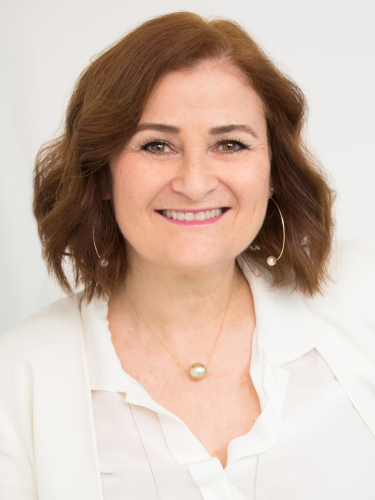This is the third article in our October special report on managing family businesses and family offices across the generations.
Founders and their heirs don’t always agree on things. In fact, there’s a growing disconnect between them, according to recent research, with investing strategies among the hottest of hot-button issues.

A recent study by Ocorian found that 93 per cent of respondents have experienced generational differences in their families, with a third saying they are significant. Ocorian is a provider of trust, administration and fiduciary services to family offices in the United States, Canada, Bermuda and the Cayman Islands.
Family disagreements can emerge in discussions about investment strategy and philanthropic priorities, among other topics, says Gerry Pulvermacher, a clinical and organizational psychologist with Gerald Pulvermacher and Associates, which specializes in the transition of family businesses.
It’s up to family-office advisors to identify and address these issues by helping to clear up misunderstandings, foster dialogue and prioritize the development of common goals. That could mean agreeing on an investment path, establishing a legacy or ensuring retirement security.
“Differences are always a challenge, but they aren’t insurmountable,” says Judi Cunningham, founder of Trella Advisory Group, a consulting firm in Toronto that works with family enterprises. “If there is goodwill and an openness for discussion, then they can work through almost anything and find a way forward.”
Where the friction usually happens
Friction between generations usually shows up in three places: how to invest, what the wealth is for, and who gets a say, observes Chris Gandhu, partner and family office leader with KPMG Canada in Calgary.
Pulvermacher says a lack of communication is another main source of conflict. For example, the vast majority of parents plan to leave an inheritance, but more than half haven’t discussed it with their children, he says. “This lack of clarity creates misunderstanding, emotional distance and even disputes over fairness among siblings—particularly when financial gifts or support are not distributed equally.”
Here are a few topics that can generate friction:
The purpose of wealth: Often younger generations have a greater sense of social responsibility than founders do. “What they want wealth used for often has a social bent to it,” says Cunningham, such as concerns about the environment and social responsibility. They are worried about the planet, she adds, and frustrated that wealth creators are leaving behind a mess.

How to invest: Gandhu says that wealth creators, who tend to be entrepreneurial, aren’t averse to risk. They’re just more comfortable with certain sectors, such as real estate. Younger generations, on the other hand, are more comfortable with emerging investment options. “Founders lean toward familiar sectors and may prefer liquidity for lifestyle needs,” says Gandhu. “The next generation may be more comfortable with newer asset classes such as venture [capital] and digital.”
A focus on secrecy and privacy: Patriarchs and matriarchs may avoid discussing succession to dodge difficult conversations, but this leads to secrecy, uncertainty and the sidelining of the next generation, says Pulvermacher. “When existing grudges or unresolved conflicts persist, families find it challenging to agree on a viable succession plan, sometimes causing the process to stall until a health crisis or death forces the issue.”
Maintaining autonomy: Often baby-boomer founders want to keep their children tied together through trusts and other structures, while the rising generation does not always want to inherit the wealth together, says Cunningham. Younger family members often want to do their own thing and not be attached to their siblings. “Autonomy and agency is very important to rising generations,” she says.
Differing views on risk and innovation: While older generations can be conservative in their views and practices, younger generations have less risk aversion. “It has them jumping in easily to things without the worry of consequences, unlike their parents,” Cunningham says. “They often want to forge ahead with new ventures and ideas.”
Cultural sensitivities: Certain cultures are reluctant to talk about death and what will happen after a founder’s death, says Gandhu. As a result, they avoid key succession conversations. Tackling these issues involves walking a fine line and gently soliciting family members’ perspectives when the family is ready to offer them. “It takes time,” he says. “You’re creating those conditions for communication.”
Mitigation strategies
The role of an advisor is less about having the right answers and more about creating the conditions for dialogue, says Gandhu. He believes that begins with “safe discovery spaces” where each family member can share their perspectives without judgment.

“From there, advisors act as translators, helping families turn technical disagreements, like asset allocation, into shared conversations about goals, values and purpose,” he says.
Recently, Gandhu worked with a family that could not agree on a shareholder agreement.
“What we ended up doing was soliciting feedback from each individual member without their answers being attributed back to them,” he says. This allowed everyone to express where they stood on a variety of issues, without fear of judgment.
How to engage founders
If it’s difficult to engage the founder, a nuanced approach is warranted, says Gandhu.
“Many founders feel they know best because they built the wealth,” he says. “The key is not to force change but to show founders that including the next generation is not about losing control but instead about preserving what they’ve created.”
Advisors should open a dialogue by focusing on something the founder cares deeply about, such as tax, the estate or philanthropy, Gandhu advises. Then they should involve the second generation in discussions on these topics. “Once they see their children meaningfully engaged in these areas, they begin to recognize the value of including them in broader decisions,” he says.
Cunningham also favours a less direct approach to engaging founders. “When the founders of the wealth are not interested in open discussion with the next gen, the key is to shift from trying to change them to building parallel channels of communication, engagement and education that don’t rely on their active participation,” she says.
Instead of forcing uncomfortable conversations that may trigger defensiveness or conflict, try creating structured spaces “where their perspectives can be surfaced, refined and aligned among themselves first,” she says.
This might involve initiating values-based projects that allow younger family members to articulate their vision of the future. The insights and ideas gleaned during these sessions can be presented back to the founders in the future, she says. In other words, “’Here’s how we’d like to contribute, if and when you’re ready,’” she adds.
Cunningham says helping families participate in more open conversations can help them find a path forward, but there’s no one-size-fits-all approach.
“For some families it’s finding a path forward together. In other families it is finding a path forward separately, and for some it’s a combination,” she says.
“Advisors need to not get locked into what they think should happen but instead stay open to the family and the solutions they are coming up with,” she adds. “And it takes time to work through these things.”
Anna Sharratt is a business and health reporter and editor with more than 20 years of experience. Based in Toronto, she has written for Canadian Family Offices since 2021. A regular contributor to the Globe and Mail, she has written for Inc.com, Forbes, Business Insider, Canadian Business, MoneySense, the National Post, The Toronto Star and other publications. She is the former managing editor of smallbiz.ca, health editor of Chatelaine and senior health writer for the CBC.
The Canadian Family Offices newsletter comes out on Sundays and Wednesdays. If you are interested in stories about Canadian enterprising families, family offices and the professionals who work with them, but like your content aggregated, you can sign up for our free newsletter here.
Please visit here to see information about our standards of journalistic excellence.




